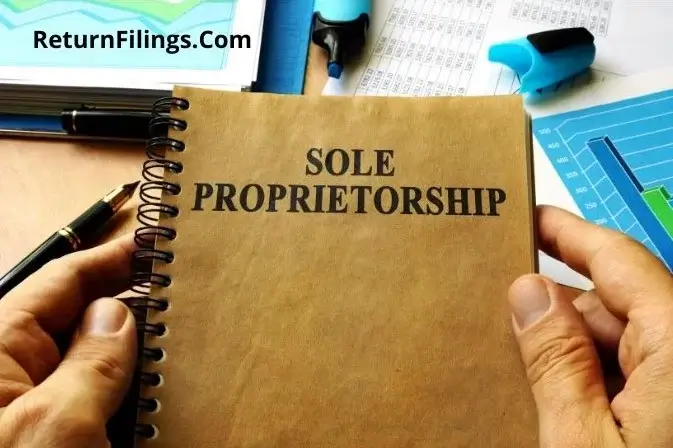How to Register a Sole Proprietorship in India: Process, Benefits & Legal Checklist
1. Introduction
A sole proprietorship is the simplest business structure in India, ideal for individuals looking to start a business with minimal investment and compliance requirements. This guide provides a comprehensive breakdown of the registration process, advantages, disadvantages, tax implications, and compliance requirements.
2. What is a Sole Proprietorship?
A sole proprietorship is a business owned and managed by a single individual. The owner bears all responsibilities, including liabilities, profits, and losses. This business structure is commonly used for small traders, freelancers, and home-based entrepreneurs.
3. Types of Proprietorship
There is only one type of sole proprietorship, where a single person owns and controls the business. However, it can function under different models such as retail, service-based, manufacturing, or freelancing businesses.
Various small businesses, including grocery stores, salons, boutiques, and retail shops, can operate as sole proprietorships. Additionally, small-scale traders and manufacturers can also establish their businesses under this structure.
4. Advantages of a Sole Proprietorship
• Easy Formation: Requires minimal documentation and legal formalities.
• Full Control: The owner has complete decision-making authority.
• Lower Costs: No mandatory registration, making it cost-effective.
• Minimal Compliance: Fewer regulatory requirements compared to companies.
• Tax Benefits: Profits are taxed as personal income, avoiding corporate tax.
5. DISAdvantages of a Sole Proprietorship
• Unlimited Liability: The owner is personally liable for business debts.
• Lack of Perpetual Succession: The business ceases to exist if the owner dies or retires.
• Difficulty in Raising Funds: Limited access to external funding.
• Limited Growth Potential: Expansion opportunities are constrained by personal capital.
6. Difference between sole proprietorship and partnership firm
A proprietorship refers to a business owned by one individual, whereas a firm can include multiple partners operating under a partnership structure. A proprietorship lacks a distinct legal entity, while a firm (in case of a partnership) has a separate legal identity.
7. Step-by-Step Registration Process
Step 1: Obtain a PAN Card
A PAN card is essential for tax filings and financial transactions. PAN if sole-proprietorship is same as that of PAN of owner / sole-proprietor.
Step 2: Choose a Business Name
Select a unique business name and ensure it complies with trademark laws.
Step 3: Open a Business Bank Account
All financial transactions must be routed through this account for better financial management.
Step 4: Register under the Shops and Establishments Act
Most states require registration under this Act for business operations.
Step 5: Obtain GST Registration (If Applicable)
• Mandatory for businesses with a turnover above ₹40 lakh (for sale of goods) or above ₹20 lakh (for sale of services)
• Enables tax compliance and invoicing under GST.
Step 6: MSME/Udyam Registration (Optional but Beneficial)
Registering under the MSME Act provides access to government subsidies and schemes. Micro-enterprises have an investment limit of ₹1 crore and a turnover limit of ₹5 crore, while small enterprises have higher limits.
8. Compliance Requirements for a Sole Proprietorship
• Income Tax Returns: Must be filed annually.
• GST Returns: Required for registered businesses.
• TDS Deductions: If applicable, the proprietor must deduct and file TDS.
• Other Licenses: May require industry-specific licenses such as FSSAI, IEC for import/export, etc.
9. Minimum Requirements to Start a Sole Proprietorship
• A PAN card for the proprietor.
• A business name and address.
• A bank account in the business name.
• Basic registrations such as Shops & Establishment Act and GST (if applicable).
10. Sole Proprietorship vs. Any registered Company / LLP
| Feature | Sole Proprietorship | Registered Company / LLP |
|---|---|---|
| Legal Identity | No separate legal entity; owner and business are one | Separate legal entity distinct from its owners |
| Liability | Unlimited; personal assets at risk | Limited to the amount invested; personal assets protected |
| Compliance Requirements | Very minimal; few regulatory filings | Higher compliance under Companies Act / LLP Act, annual returns mandatory |
| Ownership | Single owner only | Multiple shareholders (Company) or partners (LLP) |
| Taxation | Taxed as individual; personal income tax slabs apply | Taxed as per corporate tax rates (Company) or partnership tax (LLP) |
| Perpetual Succession | Ends with the death or incapacity of owner | Continues despite changes in ownership or death of members |
| Registration Requirement | Not mandatory; can start with minimal documentation | Mandatory registration with MCA (Ministry of Corporate Affairs) |
| Fundraising | Difficult to raise external funds; limited to personal savings or loans | Easier to raise funds from investors, banks, VCs, etc. |
| Transferability | Not transferable; business ends if ownership changes | Shares (Company) or interest (LLP) can be transferred |
| Audit Requirements | No mandatory audit unless turnover crosses threshold | Statutory audit mandatory for Companies; LLPs above threshold |
| Business Credibility | Less credibility in contracts, tenders, or vendor onboarding | Higher credibility; better brand image and trust |
| Decision Making | Quick decision-making as owner has full control | Decisions are shared among directors/partners; formal process |
| Government Tenders & Contracts | May not qualify due to informal structure | Preferred for government contracts and public procurement |
| Name Protection | Business name is not protected | Registered name is legally protected and unique nationwide |
| Continuity of Business | Business shuts on owner’s death/incapacity | Business continues; independent of individuals involved |
| Statutory Registrations | Optional GST, MSME registrations | Mandatory PAN, TAN, GST (if applicable), and others |
| Startup Recognition / Benefits | Not eligible for DPIIT startup benefits | Eligible for Startup India schemes, tax holidays, IPR fast-tracking |
11. Common Mistakes to Avoid
• Not registering under the Shops and Establishments Act.
• Failing to open a dedicated business bank account.
• Ignoring GST registration when turnover exceeds the limit.
• Not keeping proper financial records.
12. Conclusion
A sole proprietorship is an excellent option for individuals starting a small business. However, understanding its limitations and complying with the necessary regulations is crucial for long-term success. By following the registration steps and compliance requirements outlined in this guide, business owners can establish a legally sound and profitable enterprise. For professional assistance, reach out to us on email: info@returnfilings.com or on whatsapp: https://wa.me/919910123091.
frequently asked questions (faq's) related to registration and compliances for sole proprietorship
Q What is a sole proprietorship?+
A A sole proprietorship is a business owned and managed by a single individual, where the owner is personally responsible for all business transactions and liabilities.
Q What is meant by a proprietorship firm?+
A A proprietorship firm is another term for a sole proprietorship, emphasizing its informal and unincorporated nature.
Q Who can get a sole proprietorship?+
A Any Indian citizen above 18 years of age with a valid PAN card can start a sole proprietorship.
Q How long does a sole proprietorship exist?+
A A sole proprietorship exists as long as the owner wishes. It ceases to exist upon the owner's death, retirement, or closure of the business.
Q Is there a certificate of incorporation for a sole proprietorship?+
A No, since a sole proprietorship is not a separate legal entity, it does not have a certificate of incorporation.
Q Can I get a PAN card for a sole proprietorship?+
A The proprietor’s individual PAN card is used for business transactions and taxation.
Q What is the address proof for a proprietorship?+
A Common address proof documents include a utility bill, rental agreement, or property tax receipt in the business name.
Q What licenses are required to register a sole proprietorship?+
A Common registrations include Shops & Establishments Act, GST (if turnover exceeds ₹40 lakh / ₹20 lakh as per category of state), MSME/Udyam registration (optional), and industry-specific licenses.
Q Is GST registration mandatory for a sole proprietorship?+
A GST registration is required if the annual turnover exceeds ₹40 lakh / ₹20 lakh as per category of state.
Q How long does it take to register a sole proprietorship in India?+
A The registration process typically takes 10-15 days, subject to departmental approvals.
Q Can I open a bank account in the proprietorship business name?+
A Yes, banks allow opening a business account in the proprietorship’s name with valid business registrations.
Q Can I operate a proprietorship from my house?+
A Yes, many proprietorships, such as freelancing and online businesses, can be operated from home.
- For further reading, explore the following topics:
- 🤝 Partnership Firm Registration in India: Complete Step-by-Step Guide, Taxation & Compliance
- 🏢 How to Register a Private Limited Company in India: Incorporation Steps, Documentation & Compliance
- 🧾 GST Registration Process in India: Who Needs It, Documents Required & Benefits Explained
- 👤 One Person Company (OPC) Registration Online in India: Process, Requirements & Documents Checklist
Leave a Message
WhatsApp us

